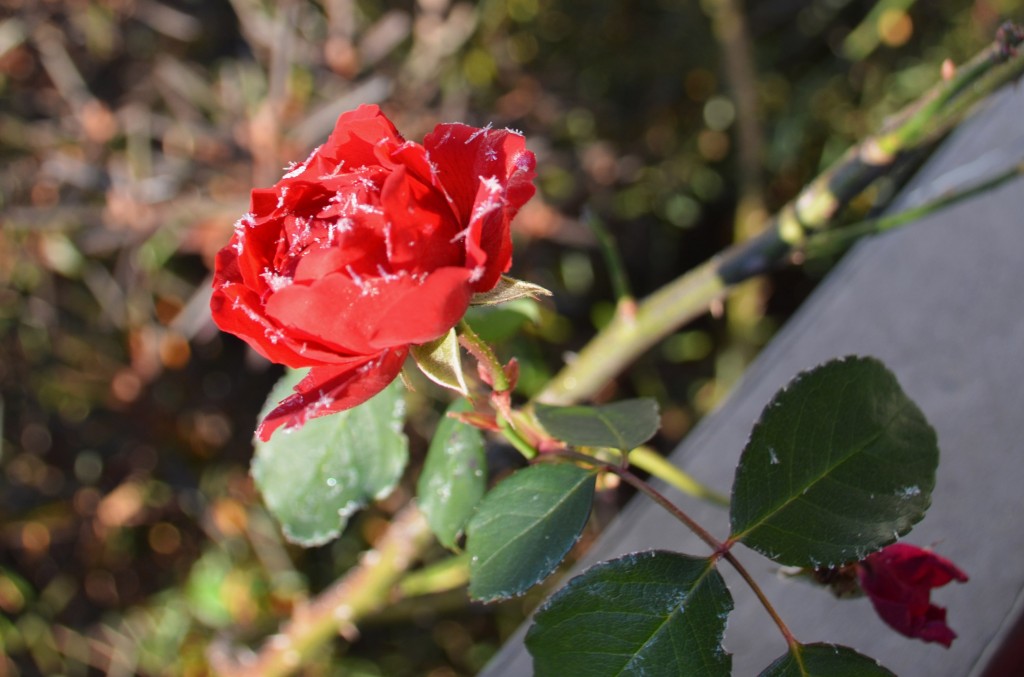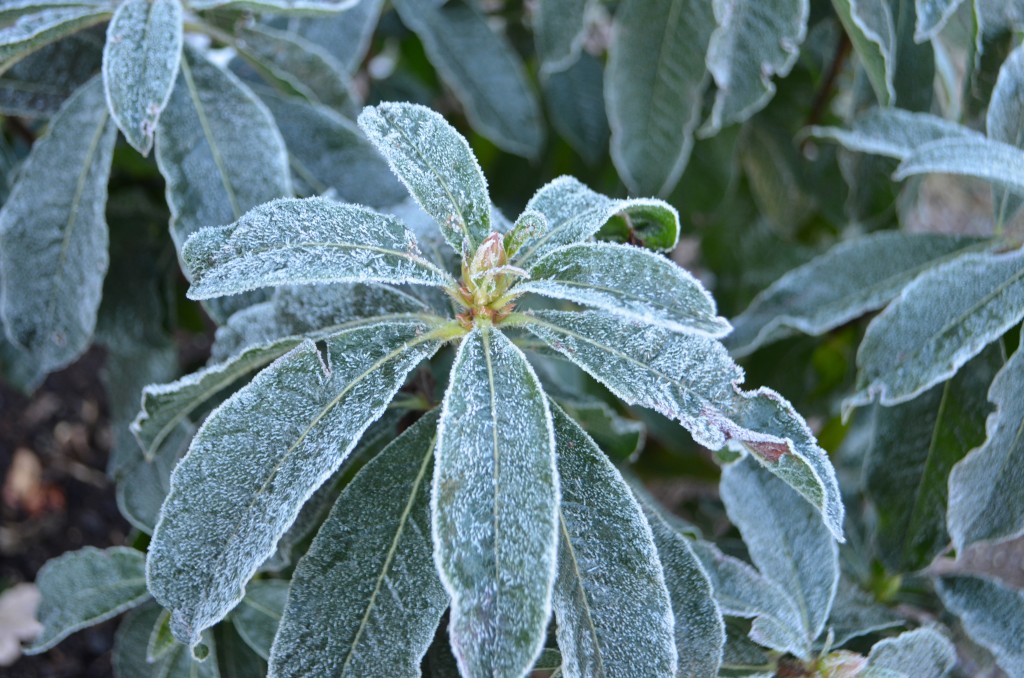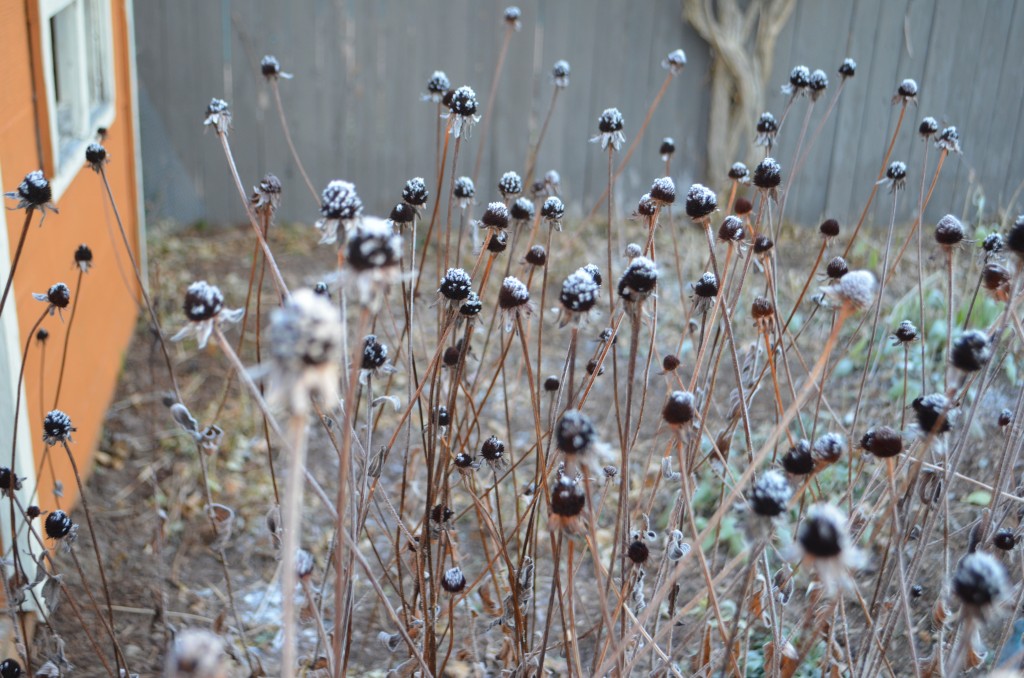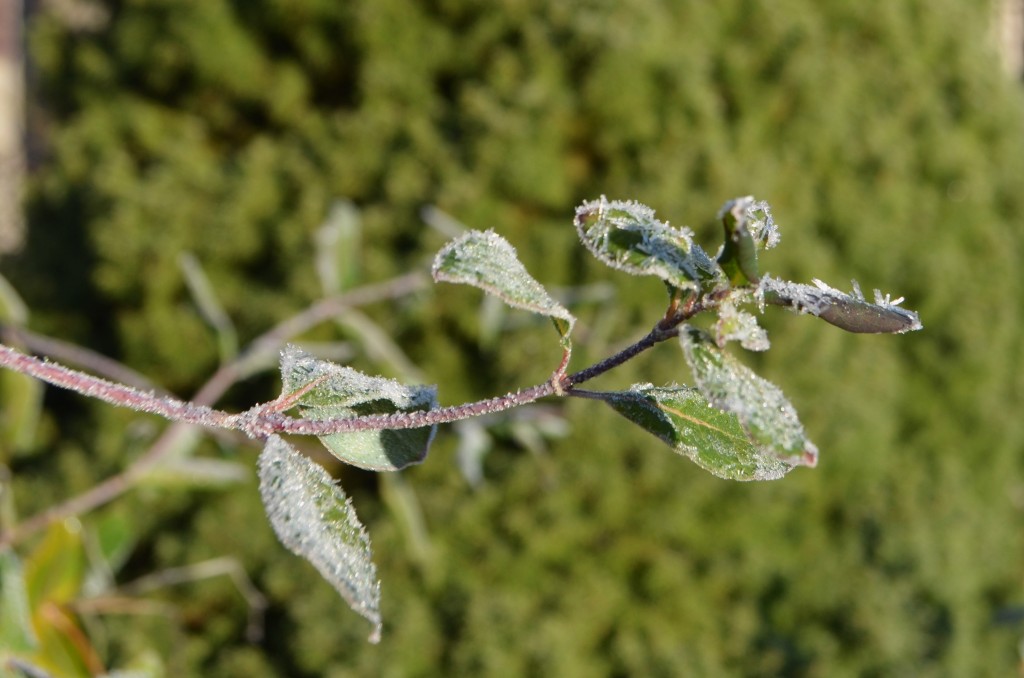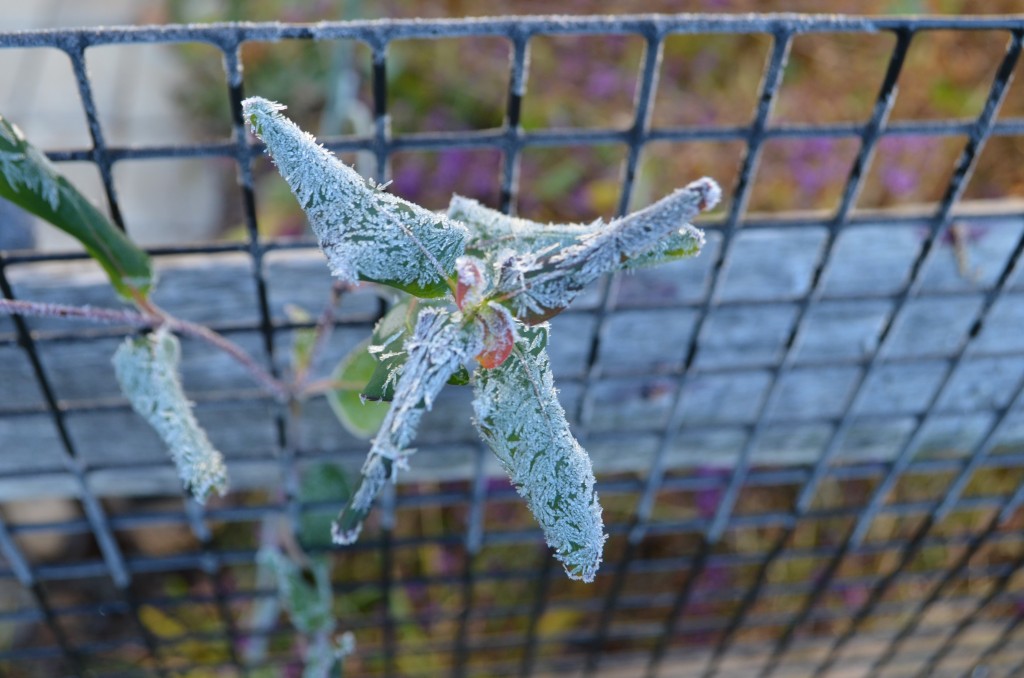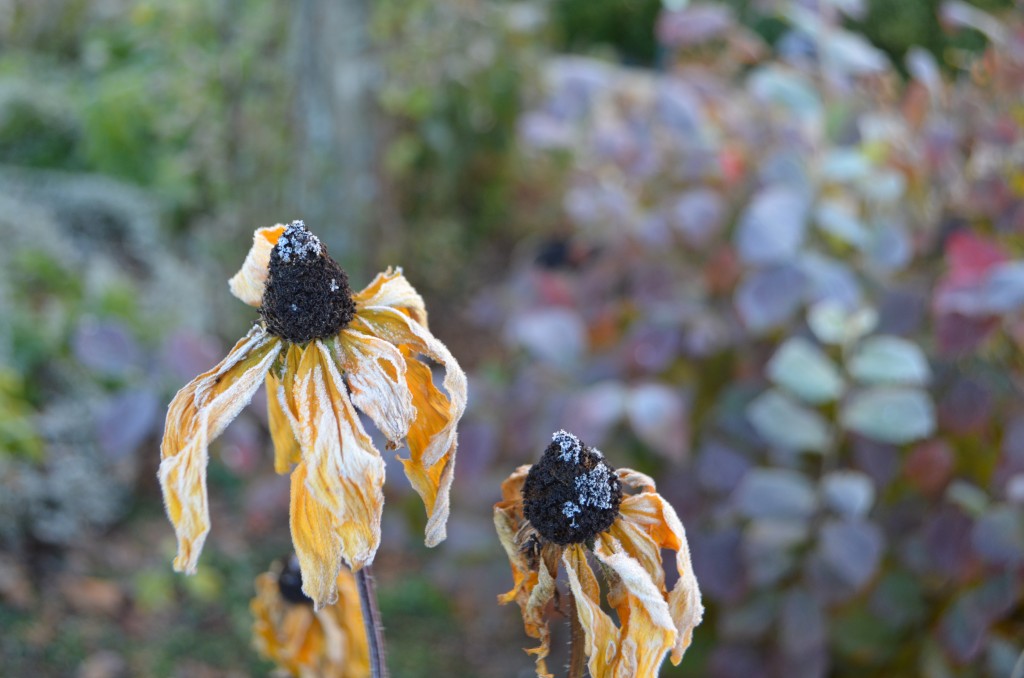Wishing you all a warm wonderful holiday filled with family,fun ,and love. Throw in some great food and a bottle of wine or two and of course, a beautiful floral centerpiece and it can’t help but be perfection!
Happy Thanksgiving and safe travels
I spend a lot of time out in the garden, by myself, with only the plants and critters, no humans (sometimes thankfully) and therefore no chatter. Most of the time I am A-OK with this as I pretty much enjoy solitude and find it relaxing to have my mind drifting while my body is working. But, oddly, there are times when I wish there was conversation or company and my busy brain wants more stimulation than worrying about rabbit damage and lack of rainfall. So, I do what any self-respecting adult gardener would do….I play make believe with the plants.
As a child I had a wildly super over active imagination ( double superlative necessary). I was a pro at inventing games, scenarios, and drama with dolls and toys inside and anything Mother Nature could give me outside. I loved to be in the woods and created busy little words where the insects had names and families, and I will elaborate no more lest you think my mother should have committed me,but you get the idea, huh?
Now ,I chit chat with the plants about their health and performance and even create little contests with them like; who will bloom first? who can continue blooming the longest? and most importantly here; who is blooming last? To be fair I usually make them only compete with their genus siblings during the season (first rose, first clematis etc) but the actual first of anything in the Spring and last of anything in the Fall always get special attention.
First of anything is almost always the siberian squill, even though by rights it should be the early snowdrops. The squill has a location advantage as the snow cover melts there early, which I explain to the snowdrops so they won’t feel insecure.
Last of anything used to be the chrysanthemum x rubellum ‘Copper Penny’, and it held that title until a new addition a few years ago stripped it away. Now last of anything is a chrysanthemum called ‘Will’s Wonderful’
I will pause here to muddy the waters a bit with nomenclature and breeding history , skip this paragraph if that bores you.
Chrysanthemum x rubellum, recently volleying back and forth from the genus chrysanthemum to the genus dendranthemum, has a very murkey origin. Breeding in the 1930’s using a mum misidentified as chrysanthemum coreanum (Korean) which was actually chrysanthemum zawadskii v.sibiricum, led to a group of hybrids referred to as Korean mums.
A different breeder then “discovered” what he thought was a new species and growing in Kew Gardens and named it rubellum although it was later determined that rubellum was just a vigorous strain of the chrysanthemum zawadskii already identified and growing in what is now Slovakia. So this plant should have been called to be correct (deep breath) chrysanthemum zawadskii v sibiricum robustrum.
Breeding ensued using this mum of many names, so now this ‘group’ of mums and their progeny are all called by all sorts of names, none 100% accurate and no one cares. Some call all the mums bred using rubellum the Rubellum group, some call them the Sheffields ( after the popular Sheffield Mum) and to some they are and always will be the Korean group. Whew.
Whatever you call him, ‘Will’s Wonderful’is just that. I originally bought it because of the name ( my Wil deserves some tribute out here), but Will the plant has more than earned his place in the garden. The foliage has a blue gray hue and is sharply scented. The plant itself is extremely hardy and does not need pinching to stay upright like the others in his clan. Blooming begins in October with bright red buds opening to strawberry red petals that fade to whitish pink as you get closer to the sunny yellow center. They are still in full bloom and bud here in mid November after many nights in the 20’s, lots of frost and even snow.
I cut a bunch 2 weeks ago and put them in a vase on my desk, and here they are today, still looking as fresh as the day I brought them in.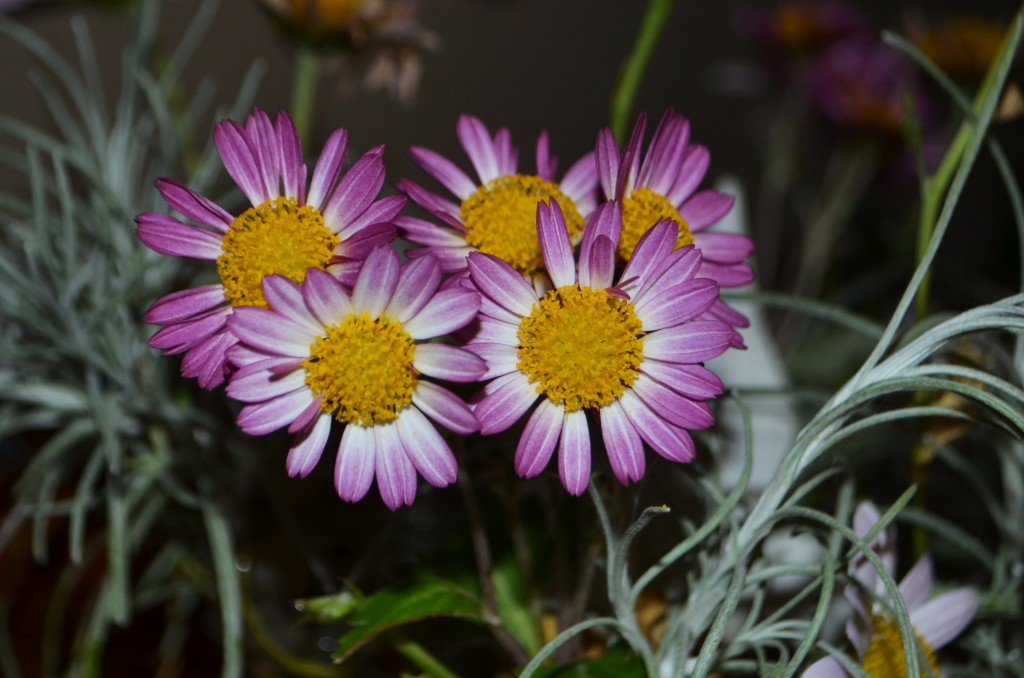
The only source I know for them is Lazy S Farms, and that we even have that one is only due to a request from Margaret Roach when her source, Seneca Hills Perennials , ceased to offer them.
Plant Will, grow Will, love Will, he really is wonderful.
 This morning we received our first snowfall of the season and I did something highly unusual for me, I got up, pulled up the shades and climbed back under the covers to watch the snow fall.
This morning we received our first snowfall of the season and I did something highly unusual for me, I got up, pulled up the shades and climbed back under the covers to watch the snow fall.
As a mom, mornings involve me dragging myself out of bed to supervise the girls and approve outfit/makeup choices etc. I am in no way a morning person, so coffee is a necessity to get through the dressing/re-dressing and yet again more re-dressing that is a teenage girl’s norm. By the time they head off to school I am totally awake and it is on to the drudgery of laundry, tidying, and getting myself ready for the day. But they had today off.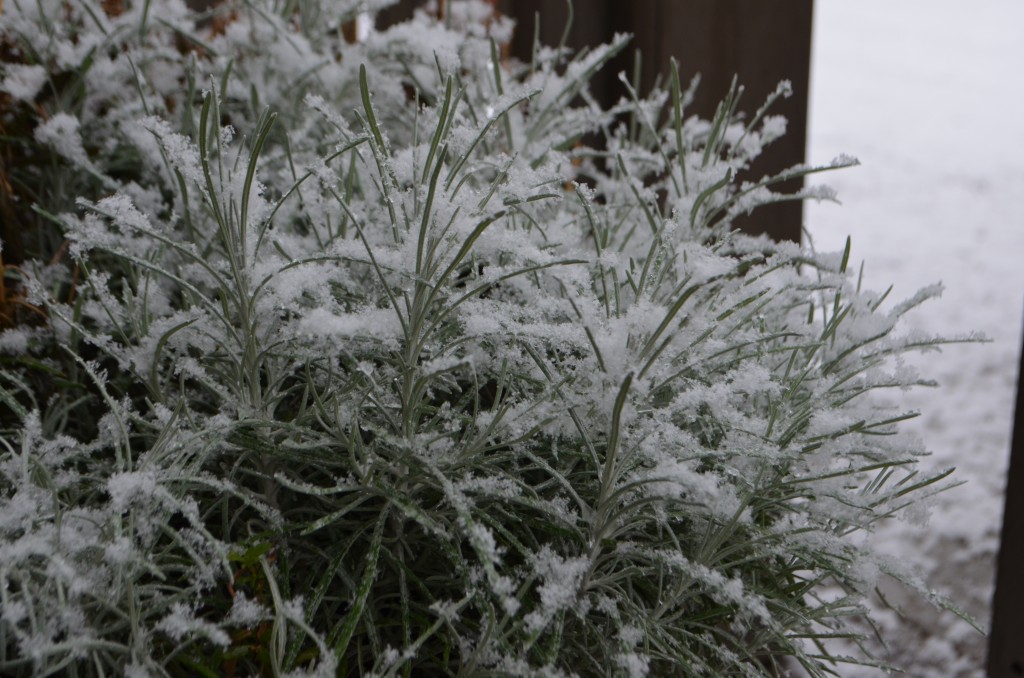
As a gardener, November winter weather events involve worrying about chores not done, bulbs not yet planted, and the consequences of snow so early in the season, but for some reason none of that seemed to matter, and I lay back all cozy in my bed to enjoy the sheer wonder of the first snow .It was simply enchanting.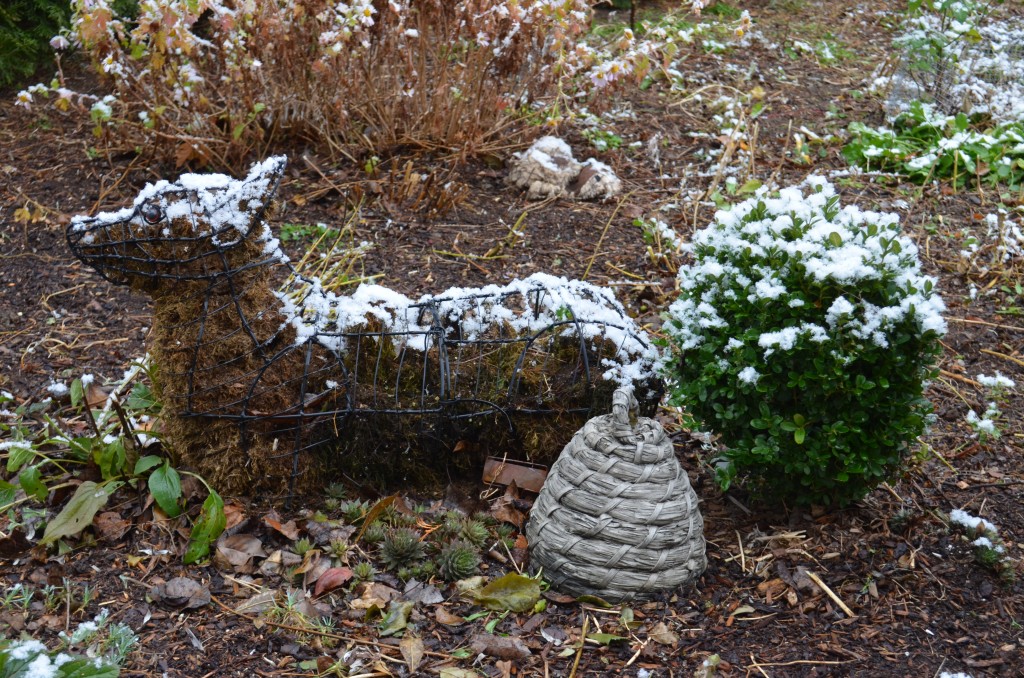
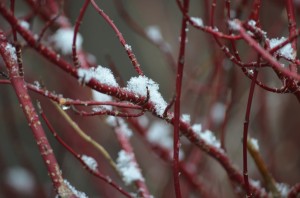
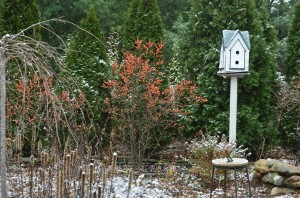
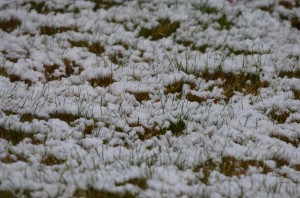
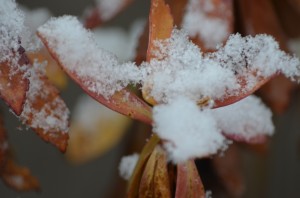
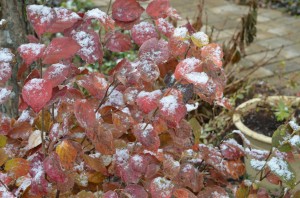
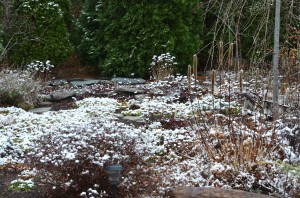
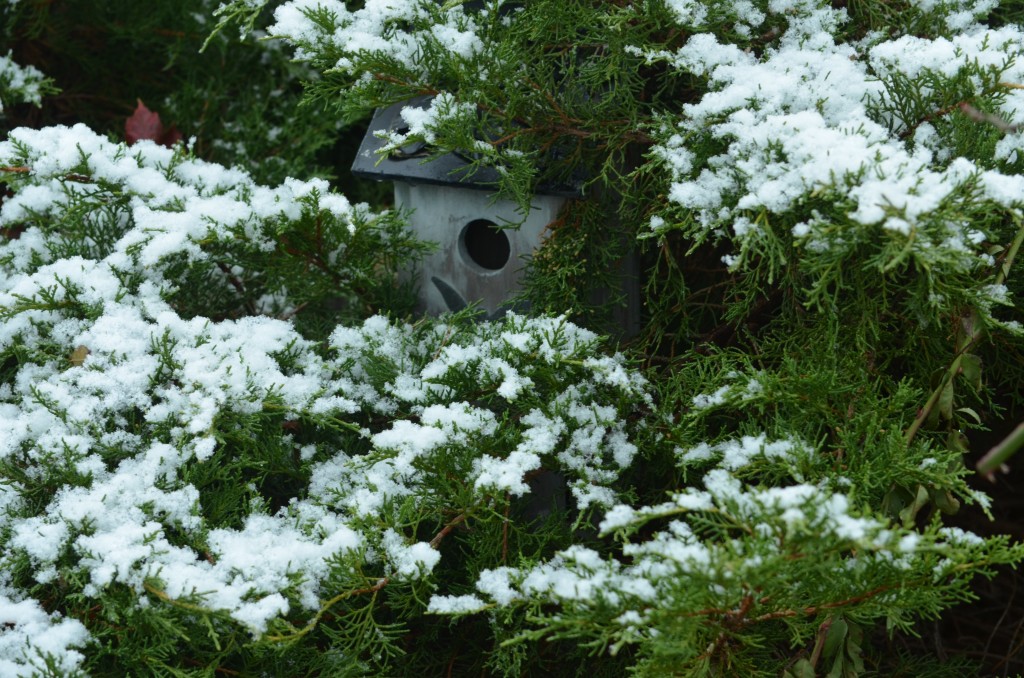
Fall gardens can be so full of color and texture, you just need to be in tune to what to look for. Instead of masses of flowers and riots of color, there are great textures, unusual forms in seedpods and exposed branches and color combinations that are more muted yet still pretty cool. I love the look of my fall garden. There are still a few things blooming ( 3 different varieties of mums , some of the hardier annuals, a smattering of roses and of course the abelia and gaillardias which just never seem to stop. Berries abound on the hollies, callicarpas and viburnums, and they and the rose hips offer color as well as food for the birds .
I went out and cut lots of hips, copper penny mums, small branches of spirea ogon and beautifully colored leaves of geranium microrhizum for some arrangements and was pretty impressed with all the color and texture still out there to enjoy.
Scroll through the slideshow to see how life looks in The Burrow in late fall….
[cincopa AYCAZUrHaIrQ]
and ps.. I tried to upload the slide show 3 times which took FOREVER! and I hate that the caption and picture number are popping up, but I refuse to do it a fourth time
This week brought us here in central MA our first series of really cold nights and accompanying frost. Did you know there is more than one kind of frost?
Do you know how to tell if any of them are coming your way?
Let’s start with a definition; frost is really just referring to the sudden onset of freezing temperatures in your garden. These temps may be only brief and temporary, but they will damage your plants. I am no meteorologist and this will be a very non-science-y (read “simplified” ) discussion, but in a nutshell…
Black frost is when the air temperature is below freezing but moisture remains in the air instead of condensing on the leaves therefore no ice forms on the plants but the freezing temperatures damage the cell structure of the plants and they turn black. You wake up and think you escaped unscathed when you see no tell tale white coating, but later in the day most foliage of tender plants is mushy and black.
Frozen dew is when water vapor in the air forms droplets on the plants. As the temperatures plummet, the droplets will freeze into ice , also causing the plant to suffer and blacken.
Hoarfrost or white frost is the pretty one. My wise guy hubby calls it frost for money because he is childish and prone to fits of off color humor. During a white frost the dew point temp. is below 32F and the temperature drops below 32 and reaches the dew point. Water vapor in the air is transformed into ice which forms on the plants as crystals and can be breathtakingly beautiful. Hoarfrost on flowers and leaves that have not yet been blackened is stunning.
This kind of frost is also seen as good ole Jacks’ calling card on your windows and frequently makes me late when I forget to allot time to scrape the car.
Frost occurs either from radiational cooling -meaning the earth cools below freezing at night after the warming sun sets and the cold ground temperatures cause what is usually a mild frost (the kind you can cover plants with sheets and buckets like a crazy person and have them survive) or from a really cold (like polar cold) air mass moving in to your area which will cause advection or killing frost ( in which all tender foliage shall be blackened and die. The end).
Frost is also dependent on relative humidity, as well as the microclimates in your particular yard, large bodies of water in proximity, which season it is occurring in ,and soil temperatures.
So what’s a gardener to do? Well, you could get sling psychrometer to help you measure relative humidity, follow the weather and make frost forecasting charts based on temperatures drops, invest in an expensive home weather station, or do what I do which is sign up at a weather service .com (I use AccuWeather) for weather alerts in your area. I have my alerts sent to my email address, but most sites now have phone apps as well. Then when you see a frost warning in your area, assume you are going to be hit and act accordingly. Frost predicting is a very inexact science because so many variables affect it , so you may get hit and the next town or even a few streets away will not. Also you can watch your own yard through a few frosty and/ or very cold nights and see which areas get hit first and which seem to hold out longer. Cold air runs downhill so areas that are low in your yard will be affected first. Know them, and don’t plant your veggies in them.
I always protect my annuals through the first several light frosts and can thus keep them going usually into very late October or early November.
Be aware though that once you have been “frosted” in the fall, the warnings stop as the weather people figure you are smart enough to know that after the first one , you are now going to see many and should be prepared.
Another good, if very general bit of info is that very humid air is less apt to have a frost than very dry air. sometimes you can tell that one by just standing outside, no sling psychrometer needed.
Anyway enough of that, around here Hoarfrost is an exciting event. So many plants look just stunning covered in frosty ice crystals, and hoarfrosts are much more infrequent than black frosts , so picture taking ensues.Here are some I took this week after our first advection, or killing, frost